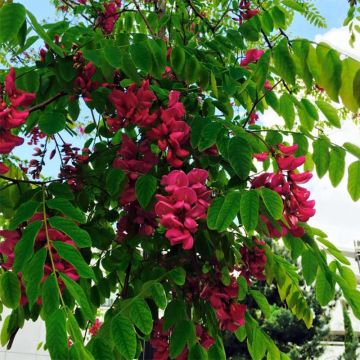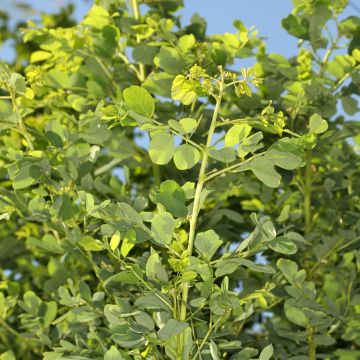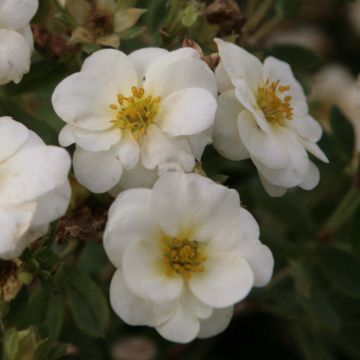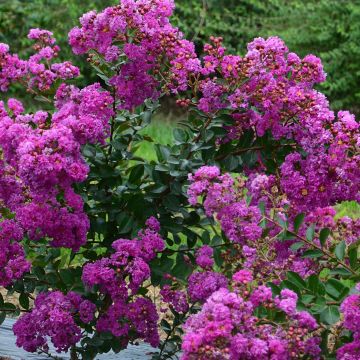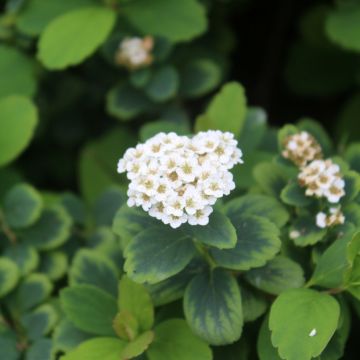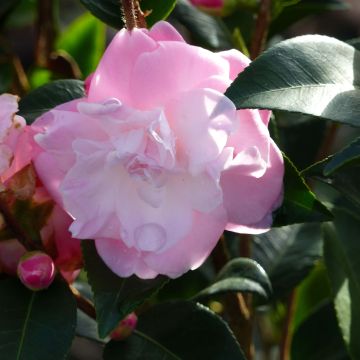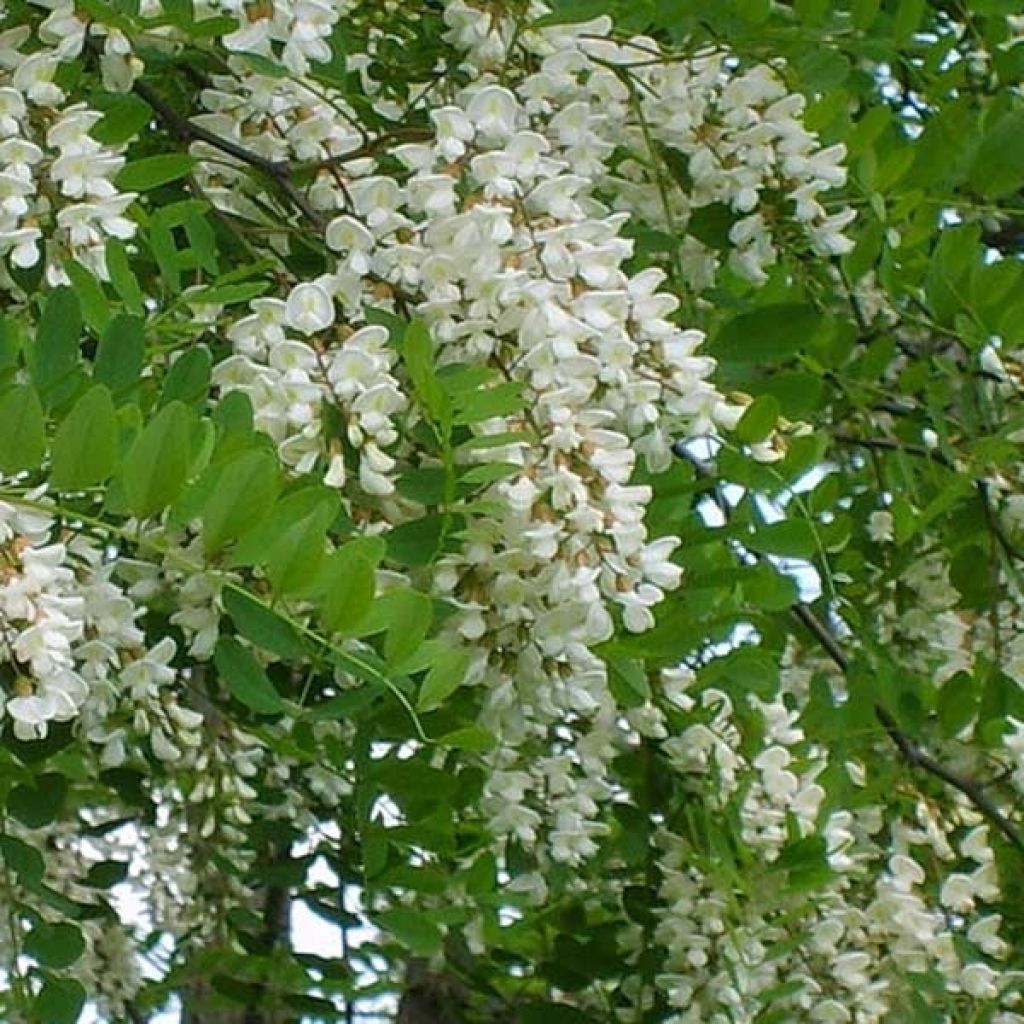

Robinia pseudoacacia - Black Locust
Robinia pseudoacacia - Black Locust
Robinia pseudoacacia
False acacia, Black Locust, Locust Tree
It has taken very well and is shooting nicely.
Jean-Luc , 18/09/2025
Special offer!
Receive a €20 voucher for any order over €90 (excluding delivery costs, credit notes, and plastic-free options)!
1- Add your favorite plants to your cart.
2- Once you have reached €90, confirm your order (you can even choose the delivery date!).
3- As soon as your order is shipped, you will receive an email containing your voucher code, valid for 3 months (90 days).
Your voucher is unique and can only be used once, for any order with a minimum value of €20, excluding delivery costs.
Can be combined with other current offers, non-divisible and non-refundable.
Home or relay delivery (depending on size and destination)
Schedule delivery date,
and select date in basket
This plant carries a 24 months recovery warranty
More information
We guarantee the quality of our plants for a full growing cycle, and will replace at our expense any plant that fails to recover under normal climatic and planting conditions.
Would this plant suit my garden?
Set up your Plantfit profile →
Description
Robinia pseudoacacia or Black Locust is an interesting tree. From May to July, it produces pretty pendulous clusters of orange-scented flowers. Its delicate and light foliage, as well as its wide and airy habit, make it an ideal ornamental tree to create light shade that allows shrubs and perennials to grow at its base. The white flowers are typical of papilionaceous plants and measure 2 cm (0.8 in), while the clusters measure from 10 cm to 20 cm (3.9 in to 7.9 in) in length. The flowers are edible and can be enjoyed in fritters. They are also highly sought after by bees, resulting in delicious honey. This black locust owes its success to its fast growth and ease of cultivation in any soil and in almost all climates, except in windy regions because its wood is brittle.
Robinia pseudoacacia is a very hardy tree, native to the Eastern United States, from the Fabaceae family. These plants are capable of assimilating atmospheric nitrogen at their roots and therefore do not need to draw it from the soil, which allows them to grow in poor environments. Thanks to this characteristic, as well as its resistance to cold and drought, it has been mainly used to stabilise and enrich degraded soils. It is a long-lived tree with a columnar habit in its early years, and its sparse canopy becomes rounded over time. With rapid growth, it will reach an average height of 15 m (49 ft) with a spread of 8 m (26 ft). The bark, initially smooth, takes on an interesting fissured texture with age. The branches are strong but brittle, with a few thorns especially in their youth. Its deciduous leaves, measuring from 15 cm to 20 cm (5.9 in to 7.9 in), are divided into about twenty leaflets. They are highly decorative, starting with a bright acidic green when budding, then turning to a medium green before colouring golden yellow in autumn. Flowering takes place in May, on individuals about ten years old. The abundant pendulous inflorescences, 10 cm to 20 cm (3.9 in to 7.9 in) long, consist of white papilionaceous flowers that blend perfectly with the yellow foliage. This highly fragrant orange-scented flowering attracts pollinating insects and can be used for cooking fritters. It is followed by the formation of flat, reddish pods measuring 5 cm to 10 cm (2 in to 3.9 in) in length, containing 4-5 brown bean-shaped seeds. Being a sucker-forming plant, the black locust produces numerous suckers at its base, which should be removed in autumn to prevent it from invading local ecosystems.
Please note, only the flowers are edible; the rest of the plant is highly toxic.
Robinia pseudoacacia is suitable for both small and large gardens, but it is not recommended in excessively windy situations. When planted individually in a small garden, it also thrives on slopes or in free hedges in a large garden. It is commonly used as an ornamental tree along avenues. You can place it against a background of evergreen shrubs or conifers (cypresses, thuja, yew, junipers). It can also be combined, in a flowering grove with poor soil, with other undemanding and highly ornamental trees or shrubs such as Sophora davidii, brooms, Indigofera gerardiana, a red oak (Quercus robur 'Purpurascens') or a purple hazel. Regularly pruned, it can form dense defensive hedgerows, which attract pollinators to the garden.
Its wood is of excellent quality, being very hard, virtually rot-resistant, and very durable.
Report an error about the product description
Plant habit
Flowering
Foliage
Botanical data
Robinia
pseudoacacia
Papilionaceae
False acacia, Black Locust, Locust Tree
North America
Other Robinia - Black Locust
View all →Planting and care
Robinia pseudoacacia is easy to grow in all regions. It thrives in the sun, sheltered from strong winds and sea spray as its branches are brittle and the wind can damage its flowering. The soil should be light and well-drained, even poor, preferably moist. However, this variety tolerates summer drought once established. It cannot tolerate excess limestone and clay, which suffocate the roots. Its resistance to atmospheric pollution is excellent, making it valuable in urban areas. From August to October, prune dead or weak wood to prevent sap flow. Also remove branches that cross inside the canopy to maintain its proper habit. Be careful of voles that love bark and attack the base of plants.
It is provided to you with bare roots in a small size to create cost-effective hedgerows or mixed hedges.
Planting period
Intended location
Care
-
, onOrder confirmed
Reply from on Promesse de fleurs
Similar products
Haven't found what you were looking for?
Hardiness is the lowest winter temperature a plant can endure without suffering serious damage or even dying. However, hardiness is affected by location (a sheltered area, such as a patio), protection (winter cover) and soil type (hardiness is improved by well-drained soil).

Photo Sharing Terms & Conditions
In order to encourage gardeners to interact and share their experiences, Promesse de fleurs offers various media enabling content to be uploaded onto its Site - in particular via the ‘Photo sharing’ module.
The User agrees to refrain from:
- Posting any content that is illegal, prejudicial, insulting, racist, inciteful to hatred, revisionist, contrary to public decency, that infringes on privacy or on the privacy rights of third parties, in particular the publicity rights of persons and goods, intellectual property rights, or the right to privacy.
- Submitting content on behalf of a third party;
- Impersonate the identity of a third party and/or publish any personal information about a third party;
In general, the User undertakes to refrain from any unethical behaviour.
All Content (in particular text, comments, files, images, photos, videos, creative works, etc.), which may be subject to property or intellectual property rights, image or other private rights, shall remain the property of the User, subject to the limited rights granted by the terms of the licence granted by Promesse de fleurs as stated below. Users are at liberty to publish or not to publish such Content on the Site, notably via the ‘Photo Sharing’ facility, and accept that this Content shall be made public and freely accessible, notably on the Internet.
Users further acknowledge, undertake to have ,and guarantee that they hold all necessary rights and permissions to publish such material on the Site, in particular with regard to the legislation in force pertaining to any privacy, property, intellectual property, image, or contractual rights, or rights of any other nature. By publishing such Content on the Site, Users acknowledge accepting full liability as publishers of the Content within the meaning of the law, and grant Promesse de fleurs, free of charge, an inclusive, worldwide licence for the said Content for the entire duration of its publication, including all reproduction, representation, up/downloading, displaying, performing, transmission, and storage rights.
Users also grant permission for their name to be linked to the Content and accept that this link may not always be made available.
By engaging in posting material, Users consent to their Content becoming automatically accessible on the Internet, in particular on other sites and/or blogs and/or web pages of the Promesse de fleurs site, including in particular social pages and the Promesse de fleurs catalogue.
Users may secure the removal of entrusted content free of charge by issuing a simple request via our contact form.
The flowering period indicated on our website applies to countries and regions located in USDA zone 8 (France, the United Kingdom, Ireland, the Netherlands, etc.)
It will vary according to where you live:
- In zones 9 to 10 (Italy, Spain, Greece, etc.), flowering will occur about 2 to 4 weeks earlier.
- In zones 6 to 7 (Germany, Poland, Slovenia, and lower mountainous regions), flowering will be delayed by 2 to 3 weeks.
- In zone 5 (Central Europe, Scandinavia), blooming will be delayed by 3 to 5 weeks.
In temperate climates, pruning of spring-flowering shrubs (forsythia, spireas, etc.) should be done just after flowering.
Pruning of summer-flowering shrubs (Indian Lilac, Perovskia, etc.) can be done in winter or spring.
In cold regions as well as with frost-sensitive plants, avoid pruning too early when severe frosts may still occur.
The planting period indicated on our website applies to countries and regions located in USDA zone 8 (France, United Kingdom, Ireland, Netherlands).
It will vary according to where you live:
- In Mediterranean zones (Marseille, Madrid, Milan, etc.), autumn and winter are the best planting periods.
- In continental zones (Strasbourg, Munich, Vienna, etc.), delay planting by 2 to 3 weeks in spring and bring it forward by 2 to 4 weeks in autumn.
- In mountainous regions (the Alps, Pyrenees, Carpathians, etc.), it is best to plant in late spring (May-June) or late summer (August-September).
The harvesting period indicated on our website applies to countries and regions in USDA zone 8 (France, England, Ireland, the Netherlands).
In colder areas (Scandinavia, Poland, Austria...) fruit and vegetable harvests are likely to be delayed by 3-4 weeks.
In warmer areas (Italy, Spain, Greece, etc.), harvesting will probably take place earlier, depending on weather conditions.
The sowing periods indicated on our website apply to countries and regions within USDA Zone 8 (France, UK, Ireland, Netherlands).
In colder areas (Scandinavia, Poland, Austria...), delay any outdoor sowing by 3-4 weeks, or sow under glass.
In warmer climes (Italy, Spain, Greece, etc.), bring outdoor sowing forward by a few weeks.
































